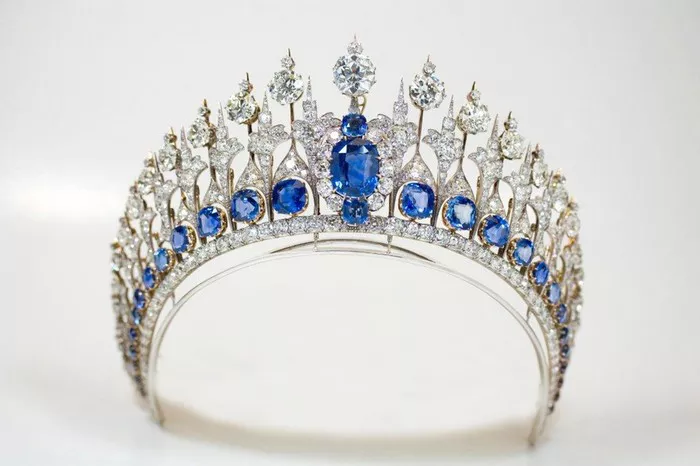Jewelry enthusiasts and collectors often marvel at the allure of yellow sapphires, which hold a special place in the realm of gemstones due to their vibrant hues and cultural significance. India, in particular, holds yellow sapphires in high esteem, considering them auspicious and incorporating them into astrological practices. Beyond their mystical connotations, yellow sapphires boast a rich history and diverse applications, ranging from exquisite jewelry to advanced technological devices. This article aims to delve into the intricacies that determine the price of high-quality yellow sapphires, highlighting five key factors that jewelry appraisers consider when valuing these precious gems.
Color: The Soul of Yellow Sapphire Value
Color is the quintessential factor influencing the price of yellow sapphires. It sets the tone for the gemstone’s visual appeal and overall value. Unlike their blue counterparts, which are judged by their proximity to a perfect cornflower blue, yellow sapphires exhibit a spectrum of shades ranging from pale yellow to vibrant orange-yellow tones. The most sought-after yellow sapphires are those with a rich, intense color that strikes a balance between vibrancy and depth.
Hue and Saturation: The specific hue and saturation of yellow play a crucial role. Gemstones with a pure, even yellow tone are generally more valuable than those with off-colors or patchy color distributions.
Tone: The lightness or darkness of the color also affects pricing. A well-balanced tone that is neither too light nor too dark often commands a higher price.
Clarity: The Purity Within
Clarity refers to the internal flaws or inclusions within a gemstone. Like most sapphires, yellow sapphires can contain a variety of inclusions, such as needles, silk, or other minerals. However, the fewer and less obvious these inclusions are, the higher the clarity grade and, consequently, the price.
Eye-Clean vs. Loupe-Clean: A gemstone described as “eye-clean” means that its inclusions are not visible to the naked eye, while “loupe-clean” indicates that the inclusions are only visible under magnification. Eye-clean sapphires are generally more valuable.
Type and Location of Inclusions: The type and location of inclusions can also impact pricing. Some inclusions, like silk, can actually enhance the gemstone’s appearance and may be desired by collectors.
Cut: Bringing Out the Best
The cut of a yellow sapphire is crucial in maximizing its beauty and value. A well-cut gemstone will ensure that light is optimally reflected and refracted, creating a dazzling display of brilliance and fire.
Proportion and Symmetry: The proportions of the gemstone, including its depth, width, and table size, must be precisely calculated to ensure optimal light performance. Symmetry is equally important, as an asymmetrical cut can detract from the gemstone’s overall appeal.
Polish and Finish: The quality of the polish and finish also affects the price. A gemstone with a smooth, mirror-like polish will reflect light more effectively, enhancing its visual appeal.
Carat Weight: Size Matters
As with most gemstones, the carat weight of a yellow sapphire is a significant factor in determining its price. Larger gemstones are generally more rare and, therefore, more valuable. However, it’s important to note that size is not the sole determinant of value; other factors such as color, clarity, and cut must also be taken into account.
Rarity of Larger Stones: Larger yellow sapphires are more rare than smaller ones, which drives up their price. However, a poorly cut or inclusion-laden large stone may not command a high price compared to a smaller, well-cut, and clean gemstone.
Price Per Carat: The price per carat often increases as the carat weight increases, due to the increased rarity of larger stones.
Origin and Treatment: The Story Behind the Stone
The origin of a yellow sapphire can play a role in its pricing, as certain mining regions are known for producing higher-quality gemstones. Additionally, whether the gemstone has been treated to enhance its color or clarity can also affect its value.
Mining Regions: Some mining regions, such as those in Sri Lanka and Madagascar, are renowned for producing high-quality yellow sapphires. Gemstones from these regions may fetch a higher price due to their reputation for excellence.
Treatment History: Gemstones that have been heated or otherwise treated to improve their appearance may be less valuable than those that are natural and untreated. However, some treatments are considered acceptable in the industry, and their impact on pricing can vary.
Conclusion
Determining the price of a high-quality yellow sapphire is a complex process that involves evaluating multiple factors. Color, clarity, cut, carat weight, and origin all play crucial roles in setting the value of these precious gemstones. As a jewelry appraiser, it’s essential to have a deep understanding of these factors and how they interact to assess the true worth of a yellow sapphire.When evaluating a yellow sapphire, one must look beyond the initial allure of its color and consider the intricacies of its clarity, cut, and carat weight. The origin and treatment history of the gemstone also provide valuable insights into its uniqueness and potential value. By understanding these factors, collectors and jewelry enthusiasts can make informed decisions when purchasing or investing in yellow sapphires.
Related topic:


